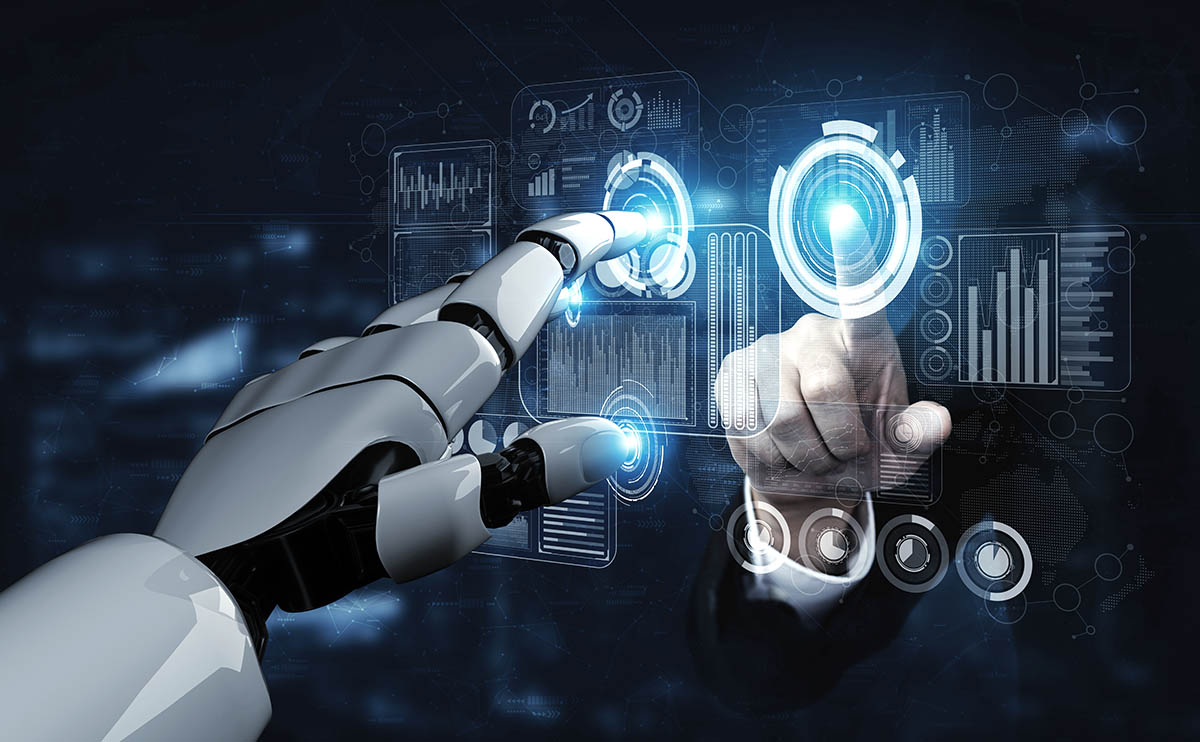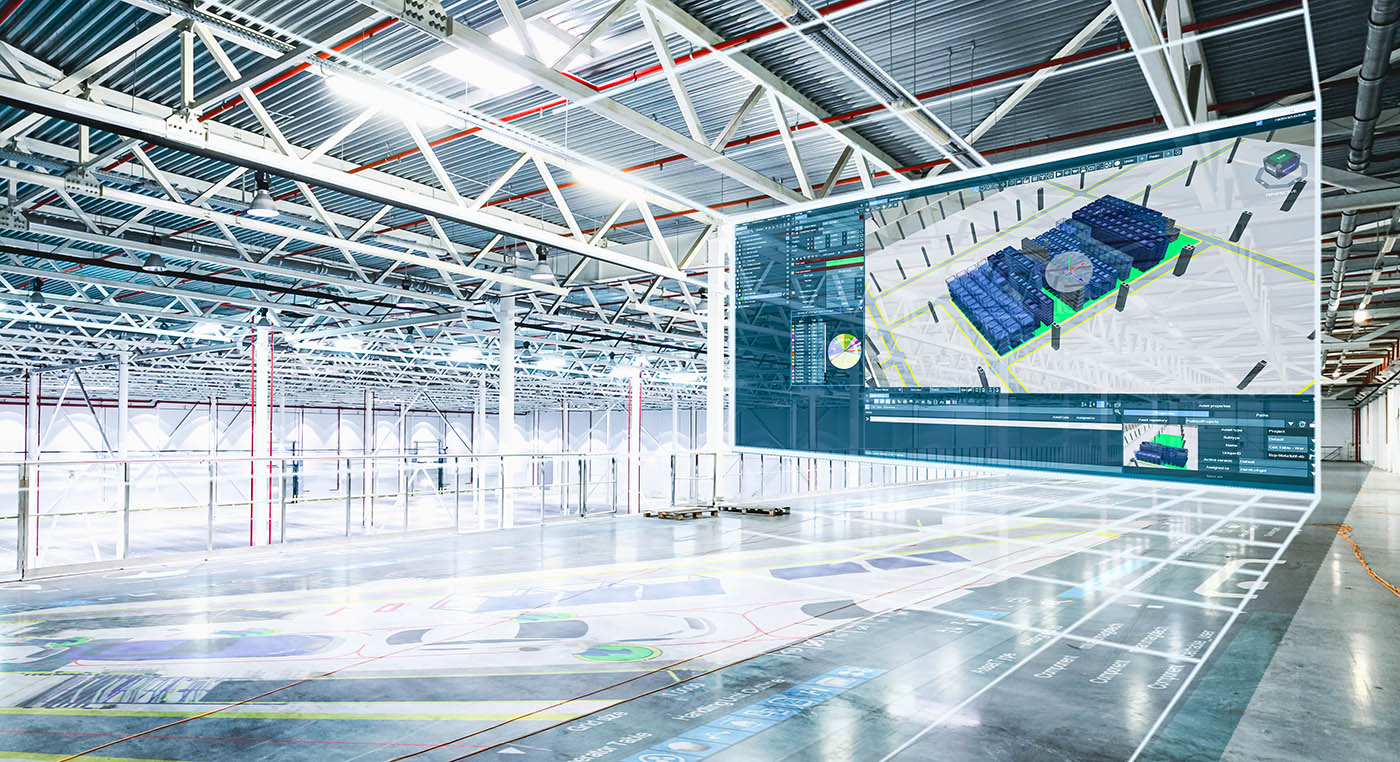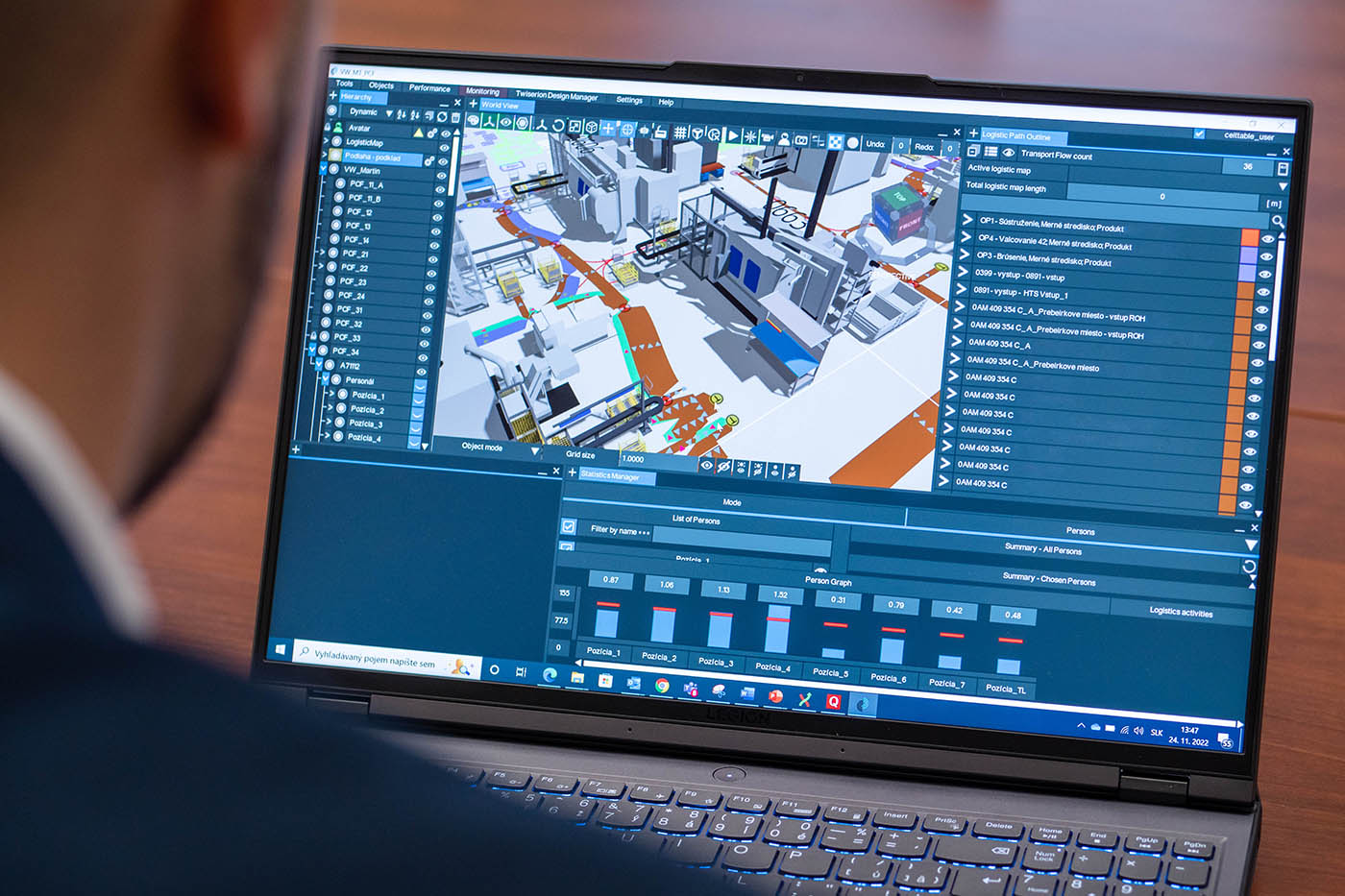The power of digital transformation in manufacturing using modern technology
Today, manufacturing and logistics systems are experiencing revolutionary changes. They are gaining new properties and functions. We are finally starting to see manufacturing as a holonic system. Machines, robots and products are becoming smart, and progressive information and communication technologies are becoming the central nervous system of future manufacturing. Radovan Furmann, Director of the Digital Factory division, told us more about the changes in production and logistics systems.
In the near future, artificial intelligence will take over many of the management actions and decisions in manufacturing. Manufacturing systems will be able to learn from their previous operations. Virtualisation will bring the mass implementation of sensors into production, enabling us to gather large amounts of data, to turn this into information which is then processed and used to create and apply new knowledge.
The new manufacturing environment will maintain and operate its virtual image using the Internet of Things and Cloud Computing technologies. Without smart, adaptive technology, companies won’t be able to work effectively in the competitive environment of global markets.
The manufacturing and logistics systems of the future will need to be above all adaptable, able to adapt autonomously, actively and quickly to any sudden or unexpected changes which occur around them and which go beyond the limits of the system’s originally defined functions. This type of system must therefore have the ability not only to change its structure, but also its functions and capacities. The basic characteristics of the adaptive manufacturing and logistics systems of the future are:
- customisation – flexibility limited to a family of components or products,
- scalability – the ability to easily modify the capacity of the manufacturing and logistics stem by adding or removing resources or by changing elements of the system which can be reconfigured,
- convertibility – the ability to transform easily the function of the existing systems, machines and management systems in order to meet new manufacturing requirements,
- modularity – the ability to integrate operating functions in units which can be moved between alternative manufacturing and logistics schemes in order to achieve optimum results,
- integrability – the ability to integrate modules quickly and precisely using a set of mechanical, information and management interfaces which enable integration and communication,
- diagnosability – the ability to ascertain automatically the current state of the system and its management in order to detect and diagnose the root causes of the equipment or product errors and quickly rectify operating problems.
Industrial engineering, technological planning and the planning, management and optimisation of manufacturing and logistics processes must react to these changes, conditioned by the fourth industrial revolution and the effort to build smart manufacturing factories. Designing, managing and optimising the manufacturing systems of the future will no longer be possible without the use of advanced technologies. Future manufacturing systems will have to have completely new properties such as: self-organisation, reconfigurability, autonomy, self-optimalisation, self-replication or the ability to learn and work autonomously by creating and using information. Designing manufacturing systems is associated with the use of a wide range of modern technologies. These are known today as Advanced Industrial Engineering. Manufacturing systems today are designed in virtual reality, and computer simulation is a common part of such systems, with methods of artificial intelligence also being used more and more.
Our company has long been developing and working on tasks and projects focused on implementing methods and approaches of advanced industrial engineering into the concept of the fourth industrial revolution. For this reason, we created the Twiserion system, which enables not only the planning of manufacturing and logistics processes, the monitoring and subsequent management of manufacturing and logistics, but also manages intelligently AGV robotic systems for carrying out various logistics activities. The Twiserion system for supporting the concept of digital business already offers today a virtual environment aimed at designing, testing and verifying decisions in individual phases of the product’s lifecycle. Its basic premise is creating a complex data connection between basic production information, processes and manufacturing resources in a joint database One of the pillars of the Twiserion system is Design Manager.
Interactive design system – Twiserion Design Manager
Asseco CEIT’s research team has developed a software module entitled Twiserion Design Manager which is used for designing manufacturing and logistics systems. This interactive tool is used for team planning manufacturing and logistics systems using 3D models. It enables the simple editing and analysis of production concepts, immediately showing their impacts in real time.
This innovative approach enables project teams to change manufacturing layouts using simple motions and to see immediately how these changes affect the manufacturing system. Twiserion Design Manager gives answers to questions such as “What happens if…?”
This software tool allows us to create complex models of manufacturing, logistics and warehousing systems with parametrical settings. These parameters include physical properties, manufacturing parameters and others on which basis the system evaluates the monitored indicators. Twiserion Design Manager brings customers, not only in industry, significant time and financial savings. It increases the effectiveness of the design and planning process by an average of 30%, while helping reduce the total workshop time by 25%. Twiserion Design Manager also improves processes, reducing manufacturing and logistics costs by an average of 30%.
The current standard for designing manufacturing and logistics system is creating layouts in a 3D environment using parametrical 3D models of machines, equipment and other accessories. These models of a manufacturing system can be altered, compared and optimised easily and quickly. Making a 3D design of a manufacturing layout usually starts with a 3D scan, or another method of digitising the manufacturing premises, production equipment and other elements of the designed system. After obtaining the required models, the manufacturing layout starts to be designed by placing these elements inside the manufacturing environment. Twiserion Design Manager allows an active design using static analysis. The proposed layout of the manufacturing or logistics system is then verified by a dynamic simulation. The final variant of the solution can be presented at the end by using elements of virtual or augmented reality with the Avatar function.
However, the concept of a digital business deals with only one aspect, and that is the digital appearance of the plant, which forms the basis for the subsequent implementation of the physical system and its operation. But the physical system always requires further management and optimisation even in the phase of real operation. The manufacturing and logistics system are in fact a dynamic and open system which must change constantly and adapt to changes within the business and outside it. This requires a data connection between the physical system and its digital form. This issue is dealt with by the concept of the factory’s Digital Twin. By connecting the data model created in the Twiserion Design Manager software and the real data collected by the Twiserion Digital Manager system and managing them together, we can say that the Twiserion system fully supports the concept of a digital twin. We’ll find out more about the concept of a digital twin next time.


